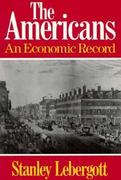Question
Suppose that when allocating money between two random people, Xiaoyu is a rational expected-Rawlsian in the sense that she will choose the allocation that maximizes
Suppose that when allocating money between two random people, Xiaoyu is a rational "expected-Rawlsian" in the sense that she will choose the allocation that maximizes the expected value of min(?1, ?2), where ?1 and ?2 are the earnings that day for person 1 and person 2, respectively. For parts (a)-(d) below, suppose that the two people are not going to get any more money that day than through the ways stated in the question.
(a) [5pts] Suppose Xiaoyu must make a decision of whether to give each of the two people $4, or to give one of them $20 and the other $0, with the "winner" selected randomly with equal probability. What will Xiaoyu choose?
(b) [10pts] Now suppose that Xiaoyu must make the above decision twice in a row. If she chooses the $20/$0 allocation twice, the winners are selected independently (that is, a coin is flipped on both occasions to determine who receives $20). What will Xiaoyu do now?
(c) [10pts] Now suppose again that Xiaoyu must make the above decision once, but she knows that one of the two people has already received $10 that day, while the other one has received nothing. What will she do?
(d) [5pts] Finally, suppose that Xiaoyu is not so rational, but instead "narrowly brackets" her decision, for each choice acting as if that choice was going to determine the day's total change in wealth for the two people. What are the answers for parts (b) and (c) in this case? Explain the intuition for any differences between your answers to parts (b) and (c) and to part (d).
(e) [5pts] Based on your answers to the previous parts, argue that it is often impossible to infer a person's social preferences (e.g. whether she dislikes or does not mind inequality) from her choices without knowing whether she brackets her choices narrowly.





Step by Step Solution
There are 3 Steps involved in it
Step: 1

Get Instant Access to Expert-Tailored Solutions
See step-by-step solutions with expert insights and AI powered tools for academic success
Step: 2

Step: 3

Ace Your Homework with AI
Get the answers you need in no time with our AI-driven, step-by-step assistance
Get Started


